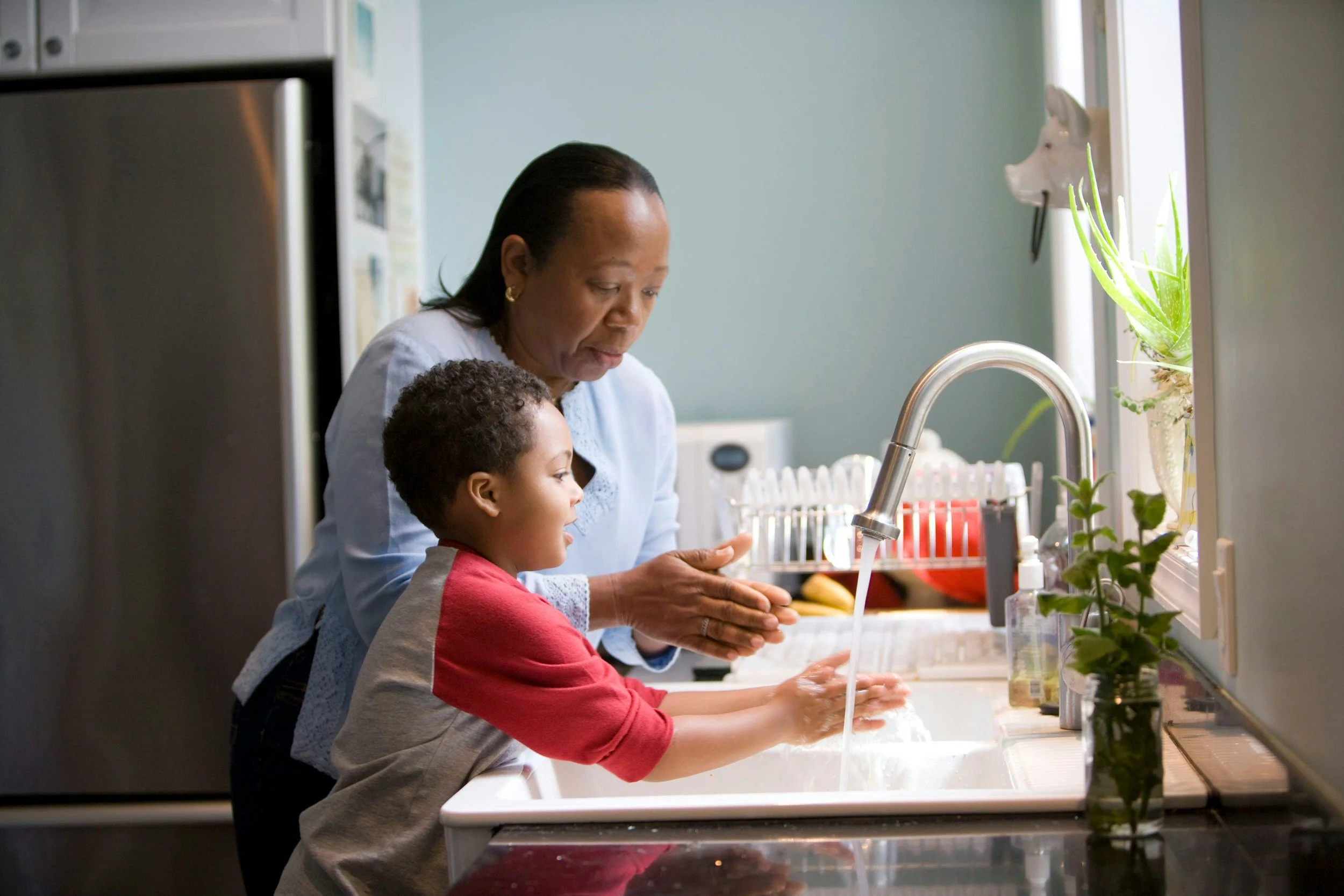Hand Washing Tips From an OT
By Jessica Jordan, MS. OTR/L
Why Hand Washing Can Be Tricky
We all know hand washing is essential to stop the spread of germs, but for some children, it’s a daily routine or habit that can feel repetitive, uncomfortable, or lack excitement especially if they don’t directly see dirt coming off their hands. I know this from experience with my own children, but here are a few occupational therapist approved tips and tricks that I love to use in order to build confidence in children when washing hands.
Adjust the Environment
The setup matters! The height of the faucet, sink, handles, soap, and stream of water can all affect a child’s independence. By far, my daughter’s favorite thing in our bathroom is her sturdy step stool. It assists her with height discrepancies and gives her independence to move it around herself (hello, proprioceptive input!).
We also use a faucet extender, which can be customized to different sinks and faucets. It helps direct the water to where little hands can reach. Ours is flexible enough to shift sides on the sink, yet sturdy enough that it doesn’t get yanked off easily during use.
Let Them Choose the Soap
Soaps are a game-changer! This is one part of the process that can be totally customized to your child’s sensory preferences. Let them pick the type, whether it is foaming, silky, liquid, or scented. Some smells may feel overwhelming, so be mindful of that. I also reach for scented soaps that use only essential oils rather than artificial fragrance.
Right now, my children are loving a Mickey Mouse foaming soap. I’ve linked a similar one [here]. But if it’s not available, just focus on making the soap fun and motivating for YOUR child. Tap into their current interests, whether it’s toy cars or dinosaurs. Add themed stickers to the dispenser and let them help decorate! It’s not just engaging, it also builds fine motor strength through those tiny sticker peeling and squeezing movements.
Remember, It’s a Sensory Experience
Washing hands is a full sensory experience! Think about:
Scents of soaps
Textures of soaps and towels (paper vs. fabric)
Water temperature
The pressure of the water on your hands allows them to feel where they are in space
Water that’s too hot or too cold can trigger a fight or flight response, so be intentional about what feels good to your child’s nervous system.
Add Structure to the Routine
Most kids (and adults) thrive with structure. The CDC recommends 20 seconds of lathering with soap, so consider creating a predictable routine around that time frame. This could look like:
Singing a familiar hand-washing song
Counting to 20 together
Using a visual timer like the Countdown Timer app (free on iPhones)
Timers are great for both home and public settings to support carryover across environments.
Use Visuals for New Learners
Toddlers learning the steps for hand washing often benefit from visual cues. Try posting a simple visual sequence by the sink.
And remember, motor coordination matters too. Movements like rubbing hands together, turning them over, and scrubbing the backs of hands require both supination and pronation, which can be tricky. Stay patient. These movements become easier with repetition and help build strong neural pathways.
Make It Fun :)
Don’t forget: a child’s primary occupation is play. So bring some joy into the routine! Maybe your child’s dinosaurs want to wash their hands too, or their Cocomelon figurines are getting a bath. Put on a song to sing along to while you are doing it! Be silly and creative, and most importantly, have fun!
We’d Love to Hear From You
Did we miss any of your favorite strategies? Feel free to comment below and share your hand-washing tips and tricks. Every child is different, and your ideas might help another family, too.
Helpful Links
If you found this post helpful, you’ll love our therapy resources! Whether you’re a parent or therapist, our apraxia and autism courses are here to offer practical tools, compassionate guidance, and real-world strategies you can use every day.
👨👩👧👦 For Parents & Caregivers: Autism Training | Online Course for Parents and Caregivers
🧑🏫 For Therapists: Therapist Course for Apraxia and Autism | Mentorship for OTs and Therapists
🏥 Work With Us: In-Person Occupational Therapy (San Diego & Long Beach Areas) | Virtual Coaching





